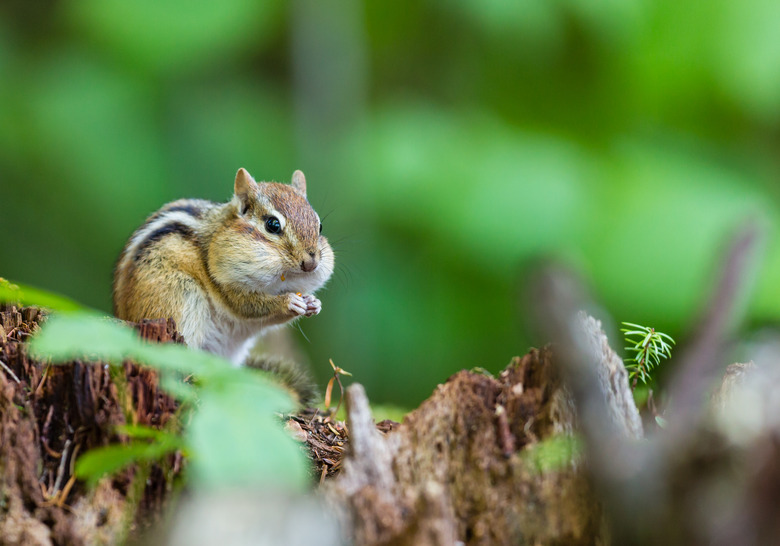The Life Cycle Of A Chipmunk
Chipmunks are related to squirrels and are recognizable by their chubby cheeks. There are 25 species of chipmunk, and all but one live in North America. One of the more common chipmunks is the eastern chipmunk, which lives throughout eastern North America and prefers deciduous and mixed forests. They are most commonly seen in old-growth hardwood forests with some open space.
A chipmunk burrow is a maze of interconnected tunnels 2 inches in diameter that run from 12 to 30 feet long. A chipmunk burrow usually has one unobstructed entrance and several others that are blocked with leaves. The tunnels lead to a nest chamber measuring about 6 to 10 inches in diameter with more tunnels to food galleries nearby. Chipmunks generally reuse burrows dug by other mammals but will add to the system using its forefeet to dig and will transport the loose soil in its cheek pouches.
Interesting Chipmunk Facts
Interesting Chipmunk Facts
Chipmunks are omnivores and eat seeds, nuts, tubers, fruits and fungi as well as invertebrates such as:
- insects
- worms
- snails
Occasionally they will kill and eat frogs and small birds, especially nestlings. They prefer red and sugar maple seeds, yellow trout lily bulbs and black cherries, but their favorite food is beechnuts. A chipmunk can fit up to 32 husked beechnuts in its cheeks at one time and may collect 5,000 to 6,000 by the end of autumn. They are diurnal creatures and leave their burrows only during daylight periods. They are less active when it is hot, windy or rainy.
The Western Red-Tailed Chipmunk
The Western Red-Tailed Chipmunk
The red-tailed chipmunk lives in western North America. More arboreal than other chipmunk species, they live in underground dens or in tree nests in rocky, brushy habitat among dense coniferous forests and at the forest's edge or in open brushy habitats created by fire where downed wood is present. They also have been known to build dens in rock crevices and log piles.
Like the eastern chipmunk, the red-tailed chipmunk's diet consists mostly of seeds, fruits, mushrooms, insects, and bird's eggs and nestlings. They also spend much of the winter in their den, with occasional appearances during warm spells. Though these chipmunks have only one litter a year, in July, like the eastern chipmunk, the young stay with their mother for about a month and a half. However, the female red-tailed chipmunk sometimes will move the brood to a tree nest before the weaning period. They are fully grown at about two months and are sexually mature at one year. Red-tailed chipmunks that survive the first 16 months tend to live to eight years of age in the wild.
References
- Connecticut Department of Energy and Environmental Protection: Chipmunk
- College of Environmental Science and Forestry: Eastern Chipmunk
- Virtual Nature Trail at Penn State New Kensington: Eastern Chipmunk
- Oregon Wildlife Institute: Conservation Assessment for the Red-Tailed Chipmunk (Tamias Ruficaudus Simulans) in Washington
Cite This Article
MLA
Yavorski, Kimberly. "The Life Cycle Of A Chipmunk" sciencing.com, https://www.sciencing.com/life-cycle-chipmunk-5162128/. 22 November 2019.
APA
Yavorski, Kimberly. (2019, November 22). The Life Cycle Of A Chipmunk. sciencing.com. Retrieved from https://www.sciencing.com/life-cycle-chipmunk-5162128/
Chicago
Yavorski, Kimberly. The Life Cycle Of A Chipmunk last modified August 30, 2022. https://www.sciencing.com/life-cycle-chipmunk-5162128/
